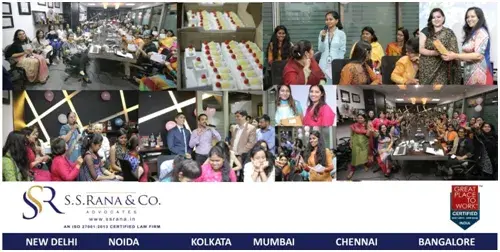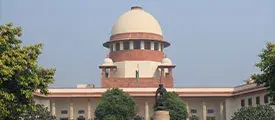2018: We are all in this together!
The Merriam-Webster word of the year for 2018 is ‘Justice’. It was a top look-up throughout the year at Merriam-Webster.com, which goes on to prove that the concept of justice was at the center of many debates around the globe this past year: racial justice, social justice, criminal justice, economic justice. In any conversation about these topics, the question of just what exactly we mean when we use the term justice is relevant, and part of the discussion. Justice has varied meanings that do a lot of work in the language—meanings that range from the technical and legal to the lofty and philosophical. For many reasons and for many meanings, one thing’s for sure: justice has been on the minds of many people in 2018.
Prime Minister Narendra Modi was once again the top newsmaker in India in the year 2018, according to the Yahoo Year in Review list. Former Chief Justice of India Dipak Misra wrote his way into the list with third position after landmark verdicts on triple talaq and Article 377, among others. M J Akbar, who resigned as Minister of State for External Affairs after allegations of sexual harassment, also featured on the list. The year saw several women taking to social media to share accounts of sexual harassment by men in positions of power. The movement crossed over to the mainstream, garnering huge support and mobilizing every section of the media.
The Karnataka election — one of the most important events on this year’s political calendar – was the Most Searched for Term in 2018. Scam-riddled Vijay Mallya and Nirav Modi also bagged spots on the list of Most Searched for Terms in 2018.
RBI Governor Urjit Patel came in at the top of 2018’s Finance Newsmakers, holding his own against the government. India’s richest man and Reliance Industries Chairman Mukesh Ambani – whose wealth reportedly increased by Rs 300 crore per day in 2018 – came in second on this list. Brother Anil Ambani, Reliance Group Chairman, also features on the list for the Rafale deal controversy.
2018, was also a monumental year for the Indian startup industry. Flipkart got acquired by Walmart in a massive $16 Bn deal, resulting in big, fat exits for many investors. The lack of exits has been the bane of investors in the Indian startup ecosystem. Therefore, the landmark deal went a long way in infusing confidence among investors and provided much-needed validation of the maturing growth story of Indian startups.
But silently and behind the scenes, something else was happening in 2018. It was the year that saw a huge uptick in dealmaking by China-based funds, mixed together with some Japanese ones as well. Data from research firm Venture Intelligence shows that investors from China and Japan were involved in a higher number of deals in 2018 than in the last seven years, with the total deal count for the year standing at 77, with an aggregate value of $3.6 Bn. Among these, Japanese MNC holding conglomerate Softbank, led by Masayoshi Son, is leading the charge. Softbank is the largest player, having executed a total of 25 deals in the country worth about $8.6 Bn and added notable startups like Paytm, Ola, OYO, and PolicyBazaar to its kitty.
Meanwhile, the year 2018, was also a stepping stone in the success of SSRana & Co., where the Firm not only successfully completed 29 glorious years of hard work and commitment since 1989, but also retained all the ISO certifications, namely, the ISO 9001:2015, ISO 27001:2013, and ISO 50001:2011 certifications, which reinforces the Firm’s commitment towards instilling best practices aimed at improving its business performance and providing proactive and high-quality legal services to it’s clients. However, the highlight of the year was the Firm’s Founding Partner, Mrs. Bindra Rana completing her 50th Anniversary at the Bar Council of Delhi on November 8, 2018. With nearly 50 years of experience in Banking, Corporate, Commercial Laws, IP, and Service matters, Mrs. Rana is a Supreme Court Advocate-on-Record, a Registered Patent Agent, and an IP Attorney. In her present role, she leads the firm’s Litigation Team along with its Founding Partner Sohan Singh Rana. She also heads the firm’s Anti-Sexual Harassment Committee. Throughout her career, Mrs. Rana has advised several Fortune 500 companies and some of the world’s leading corporations with regard to securing, protecting, enforcing, and exploiting their IP assets in India and globally!!
2018 – A Year in Corporate Law
India: New e-KYC for Telecoms without Aadhaar
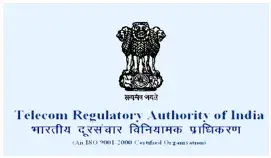
Humans being ‘social animals’ have developed and evolved themselves distinguishing them from the other living creatures with their advanced ability to communicate with one another. Physical form of communication was dominant for a number of years and those separated by distances managed to remain connected with the means of letters or messages via messengers. Updated version of technology has allowed the virtual platform to serve as the new means of the communication allowing individuals to interact although they may be miles apart from one another through the means of telecommunication services. Major sectors of the Indian telecommunication industry are telephone, internet and television broadcast Industry.
Read Full Story Click here to learn more
India: EV charging stations – a new business venture
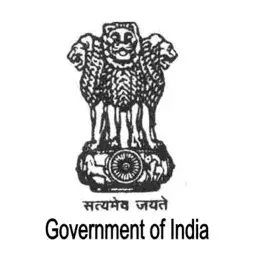
The dawn of industrialization has replaced the human labour with machines. Facilitating travel by the incorporation of technological advancements has made a significant contribution towards elevating human life. Reducing the time for transportation, it has fostered the connectivity between the people separated over distant places in terms of social and economic relations between them. Automobile industry has seen a vast improvement with the passage of years due to skills of the innovators allowing a wide range of vehicles with fascinating features such as speed which build interest of their customers. However, the fuel used to run them often depends of the usage of depleting non-renewable sources of energy such as petrol and diesel which are one of the major sources of pollution.
Read Full Story Click here to learn more.
India: Ganga Protection Bil
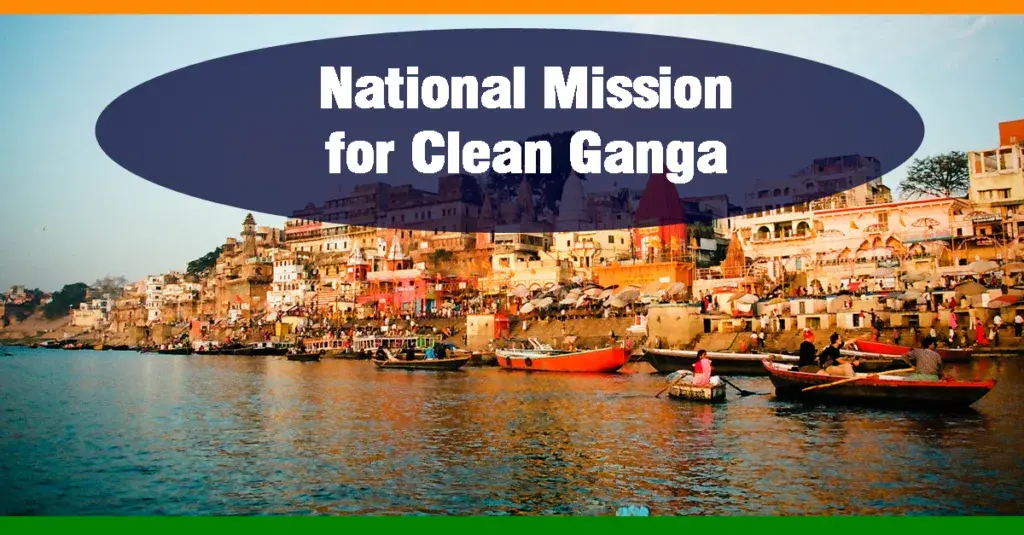
The life on earth is blessed in terms of the numerous resources provided by the nature. The abundant sunshine, flowing rivers and streams, the varied fertility of soil make earth a planet fit to sustain life of different forms distinguishing it from all other planets of the solar system. The rapid increase in the reckless exploitation of these resources and contaminating them with the wastes generated out of the passion of human greed have deteriorated the quality of life.
Read Full Story Click here to learn more.
India: SEBI streamlines IPO process
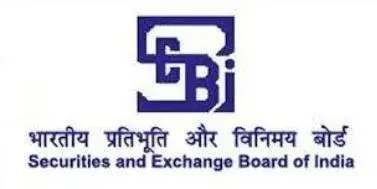
Attributable to its global ranking for on ‘Ease to Business’ scale, India is increasingly being counted as a favored business destination in the world. In order to facilitate the carrying out of business activities of varied nature, the Indian legal system allows a number of business structures such as proprietorship, partnership, companies and limited liability partnership. Incorporation of a company is a common mode for business transactions in the country.
Read Full Story Click here to learn more.
India: E-reporting of air pollution incidents

The alarmingly high rates of pollution have raised great concerns for the Government. The dipping air quality index specifically during the festive season is indicative of the worsening of the environment and the dangers of the prospective increase of pollutants therein. The present levels are sufficient to contribute towards the lower health standards and with such a poor-quality air with dangerous gasses, it shall become difficult for people to ordinarily breathe in the open air. Visualizing the gravity and sensitivity of the issue, the Central Pollution Control Board has notified for inviting complaints in this regard.
Read Full Story Click here to learn more.
India: ‘RuPay’ gaining rapid popularity

Development of internet technologies and its ready acceptability in the modern world has transformed the human world. The increased level of technological advancement can be witnessed from the fact that most of the transactions which were carried out manually or with much effort have now been switched with readily available and user-friendly electronic equipment. The advent of digitalization has touched almost all spheres of human lives making it more independent and self-reliant. Numerous forms of interactions are available on cyber-space connecting people via email, chatting, e-calling, e-commerce, e-banking, etc.
Read Full Story Click here to learn more
India: Maneuvering the havoc of Pollution
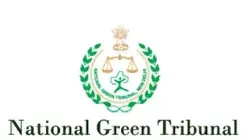
The rapidly changing modern life has made the mankind dependent on fulfilment of various needs. The human greed has expanded to the extent that it fails to distinguish between the essential and non-essential requirements. In today’s time most of the individuals have multifaceted requirements at the cost of nature due to uncontrolled and unwarranted usage of natural resources.
Pollution a menace
The reckless and careless usage of non-renewable sources of energy has resulted in elevated levels of pollution in the ecosystem. There has been inadequate disposal of remnants of energy resources used for purposes of industrial usage, vehicular needs, crop destruction, construction activities, burning of garbage, thermal energy, etc. Adding to the contamination of the environment are the man-made pollutants as plastic, chemicals, firecrackers, electric/ electronic equipment, radioactive/ nuclear wastes, etc.
Attributable to the aforesaid causes, the earth has now become a chocking chamber with immensely high quantities of poisonous components working towards deterioration of all life forms prevalent. Rise in pollution has caused problems such as dermatological issues, chronic respiratory disorders, cardiovascular problems, retardation of foetal growth, etc. It has also resulted in death and extinction of various species which once resided on the planet causing an ecological imbalance.
Protection Strategy
With the objective of the protection and improvement of environment, numerous legislative frameworks and policies have come up. The Environment Protection Act, 1986 has been enforced with the aim of conservation and improvement of environment was introduced along with legislations working such as Air (Prevention and Control of Pollution) Act, 1981, Water (Prevention and Control of Pollution) Act, 1974, E-Waste (Management) Rules, 2016, Plastic Waste (Management and Handling) Rules, 2011, Solid Waste Management Rules, 2016, etc. The National Green Tribunal Act, 2010 was brought forth to ensure effective and expeditious disposal of cases relating to environmental protection under the authority of the regulator – the National Green Tribunal.
Administrative Efforts
Considering the urgency and essentiality of protection of the environment, the administrative authorities of the country has taken numerous steps, some of which are listed below:
- The Ministry of Environment, Forests and Climate Change launched Green Good Deeds campaign on February 3, 2018, with the objective to sensitise the people about climate change and global warming and to inculcate their participation in the protection of the environment.
- The Government has also unveiled a campaign to tackle plastic pollution along its 4,660 miles of coastline and will seek to make 100 national monuments litter-free on World Environment Day, 2018, based on the theme – “Beat Plastic Pollution” focussing on adoption of environment friendly substitutes.
- In order to tackle the problem of waste management in respect to the industries involved in manufacture of plastic products, the NGT ordered for the appointment of a committee of Central Pollution Control Board and Delhi Pollution Control Committee vide its order dated September 18, 2018.
- The Supreme Court imposed a fine of INR 500,000 to the State of Andhra Pradesh and INR 300,000 each on the States of Madhya Pradesh, Maharashtra, Odisha, Uttarakhand and the Union Territory of Chandigarh on account of their failure to submit their respective State/ Union Territory solid waste management policy.
- The Supreme Court directed the use of cleaner fuel – Compressed Natural Gas vehicles in Delhi airport only for buses and coaches.
- Promoting e-safe automobile options in the Electric Vehicles, The Ministry of Road Transport and Highways has exempted the requirement of any permits in order to encourage the use of vehicles which do not pollute the environment.
- The Government is working to bring forward schemes and policies to incentivise the local production of lithium-ion batteries.
- Efforts are being made to modify the existing legal framework to incorporate the Electric Vehicle charging stations in residential as well as commercial complexes including parking lots.
- With a view to encourage shared mobility in India and transportation being a subject matter of State jurisdiction, the Government is in the process of introduction of a model legislation for States to regulate and monitor the same aiming to fulfil the objectives such as decongestion of roads and incentivising pooled travel.
- The Government of India introduced Graded Response Action Plan for implementation under different Air Quality Index categories namely, Moderate & Poor, Very Poor, Severe and Severe+ or Emergency as per National Air Quality Index. The authorities are bestowed with the responsibilities to minimize the air pollution level depending upon their respective Air Quality Index.
- Confronting the challenge of high level of air pollution in Delhi and the National Capital Region raising serious concerns requiring urgent attention on Air Quality Early Warning System for Delhi was launched on October 15, 2018 designed to predict extreme air pollution events and give alerts to take necessary steps as per Graded Response Action Plan.
- The Supreme Court has stepped forward to tackle the menace of cracker bursting on several festivals including the upcoming event of Diwali and other like occasions by its order dated October 23, 2018, whereby it permitted the use of ‘green’ crackers with low emission during the course of festival celebrations at restricted time intervals.
- The Supreme Court imposed a bar on the automobile companies from manufacturing and selling vehicles that are not compliant with the Bharat Standard-VI emission standards after March 31, 2020 seeking reduction of polluting emissions.
- The Supreme Court vide its order dated October 29, 2018, prohibited the plying of 15-year old petrol and 10-year old diesel vehicles in the National Capital Region due to the alarmingly high levels of pollution in the region.
- Halt of all construction activities involving excavation, civil construction to remain closed in Delhi and other NCR districts from November 1, 2018 – November 10, 2018 including closure of all stone crushers, hot mix plants generating dust pollution in Delhi and other NCR districts from November 1, 2018 – November 10, 2018 has been ordered.
- All industries using coal and biomass as fuel (excluding thermal and waste to energy plants)
are directed to be shut in Delhi and other NCR districts from November 1, 2018 – November 10, 2018.13 - Transport department and traffic police shall be required to intensify checking of polluting vehicles and control travel congestion in Delhi and other NCR districts from November 1, 2018 – November 10, 2018. 13
- Stringent monitoring including imposition of on the spot fines for visibly polluting vehicles indicative of zero tolerance towards pollution causing vehicles. 13
- Publishing of public advisory in newspapers recommending the public to reduce outdoor activities and minimise their travel using private vehicles as much as possible encouraging reliance to public transport. It shall also inform about penalties that may be imposed to penalize the pollution causing segment including industries. 13
- EPCA has warned that in the event of further dipping of pollution levels, the private vehicles would be stopped from plying. 13
- In view of depleting air quality, the Court of District Magistrate of Ghaziabad (hereinafter referred to as the “Court”) has ordered suspension of all private construction activities and has instructed the sealing of any visibly polluting industries and the ones which are using fuels till November 10, 2018 considering the critical air quality recognized as ‘Severe’. The said judicial authority also recommended the closure of seven identified polluting industries violating the green norms.
- The Environment Pollution (Prevention & Control) Authority has further mandated the Delhi Pollution Control Committee to regulate the Government agencies to ensure efficient control of pollution levels.14
- To reduce the increasing levels of pollution in its region, Delhi Pollution Control Committee has introduced a scheme of awarding subsidy for replacing/ conversion of coal-based tandoors with electricity/ gas-based tandoors vide its notification dated October 28, 2018.
Working for the improvement of the surrounding environment, the administrative sector of the country has made immense contributions in the form of laws, rules, regulations, policies, schemes, strategies thus making a cleaner and heathier living space.
India: E-Pharmacists perplexed over Madras HC ban
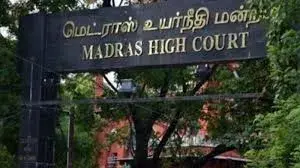
Facilitating the modern lifestyle, technological advancements have transformed the human lives. The skill of innovation has eliminated the dependence on physical media for fulfilment of major requirements and has rather provided a virtual platform making all major services such as information, record maintenance, communication, commerce, banking available at the click of a button. Taking recourse to the digitalization, the pharma sector has also entered the e-space.
Read Full Story Click here to learn more.
India: Compliance to Data localization regulation

The advent of modernization has introduced many technology dependent miracles. Advancement in the innovative skills of human labour have facilitated the development of a digital infrastructure which caters the multiple needs of the individuals over virtual platform thereby inculcating independent handling by them. Internet is increasingly becoming the medium of carrying out all major present-day activities including information dissemination, communication, commercial transactions, banking functions, etc. This has led to the elevation of the standards of living and has raised the number of e- payments modes.
Read Full Story Click here to learn more.
India: Government to strengthen ‘women- safe’ laws
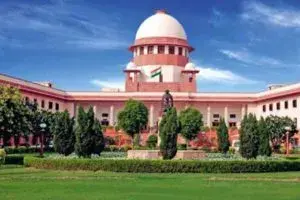
One of the important gifts of modernization is equal recognition of the caliber of women. Restricted to the household works and raising of children, the women were confined to the four walls of the house in the earlier times. However, the evolution in the society has enabled the identification of the talent of the women and their right to earning a livelihood. Nowadays, men and women work together and earn themselves a respectable living in the society. Although, co-working is now a socially accepted phenomenon, women at workplace are often subjected to harassment and misbehavior by their employers and co-workers.
Sexual Harassment
Sexual Harassment activities have been identified as unwelcome behavior by any person either individually or in association with other persons or by any person in authority whether directly or by implication such as eve-teasing, physical contact and advances, sharing offensive data or any other unwelcome physical, verbal or non-verbal conduct of sexual nature.
Present Day Scenario
There have been numerous episodes disclosing ill-treatment against the female staff by their colleagues. Not restricted to limited segment of the society, even the most glamourous professions come within this darker side. Owing to many reasons including exploitation as well as harassment by enquiring authorities and questioning eyes of the society, such instances are continuing and majorly, not reported.
In the recent times, a change is being witnessed where the problem of sexual harassment in work place is increasingly coming into light with more and more women are bringing such cases to the knowledge of the people and bringing the awareness in the society, and in many cases to the records of police also, whereas earlier they were hiding these issues.
Prevalent legislature
A number of efforts are being made with a view to ensure the provision of safe working environment for the women.
The Supreme Court of India vide its judgement in the leading case of Vishakha and others v. State of Rajasthan laid the guidelines for ensuring a safe work environment by casting a duty on employer to prevent or deter the commission of acts of sexual harassment and to provide the procedures for the resolution, settlement or prosecution for the same while holding that Gender Equality as a part of the Fundamental Rights enshrined under Articles 14 (Right to Equality), 19 (Right to Freedom) & 21 (Right to Life) of the Constitution of India.
The Sexual Harassment of Women at Workplace (Prevention, Prohibition and Redressal) Act, 2013 was enforced which provides for constitution of Internal Complaints Committee to monitor and regulate the complaints of sexual harassment, settlement through conciliation, is the duty of the employer as per Section 19 to provide a safe working environment, inform about penal consequences for committing sexual harassment, organization of workshops and awareness programmes sensitizing the employees, providing adequate redressal forum, etc.
Need for more…
Even though efforts have been made to tackle the issue of sexual harassment at workplace, the repeated cases have risen the concerns of the Government. In order to reinforce the legal mechanism in the said regards, the Group of Ministers are in process of strengthening the existing framework of rules and regulations as well as for institution set ups to create an efficient and effective system to control the problem of sexual harassment. The Government is working to devise new strategies and policies for protecting the rights of the women based on the recommendations by the legislature.
In furtherance of the same, the Government has launched an electronic complaint box to allow women to submit their complaints of sexual harassment committed against them, irrespective of their work status.
India is making consistent efforts to make it a women friendly working environment.
2018 – A Year in Trademarks
India: Delhi High Court Orders Sardarbuksh to Stop Infringing Starbucks trademarks and copyrights
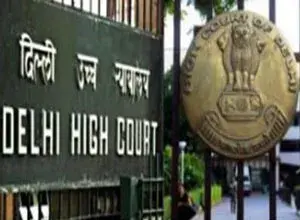
The Honorable court entered a judgment in favor of the purveyor of premium coffee against the chain that opened as Sardarbuksh. Starbucks Corporation filed a suit before the Hon’ble Delhi High Court in July 2018 alleging that the Sardarbuksh name and logo infringed Starbucks trademarks and copyrights. The Sardarbuksh logo shared with the Starbucks logo a design consisting of concentric circles, the similar words “Sardarbuksh” and “Starbucks” at the top of the outer circle, a figure surrounded by wavy lines in the middle, and a black, black, and white color scheme.
Read Full Story Click here to learn more.
India: Delhi High Court restricts the infringement of the mark ‘John Deere’
The Hon’ble Delhi High Court, on May 23, 2018, passed an order in the case of Deere & Company & Anr vs. Malkit Singh & Ors, in favor of Deere & Co. (hereinafter referred to as the “Plaintiff”) issuing an interim injunction against Mr. Malkit Singh & Ors (hereinafter referred to as the “Defendant”) holding that the Defendant has infringed the trademark and trade dress of the Plaintiffs products in bad faith. The case is listed before the Court on July 30, 2018, for disposal as well as for framing of issues and for case management hearing.
Read Full Story Click here to learn more.
India: Likely Preference: Tax Exemption or Trademark Protection?

The Goods and Service tax regime covered different aspects of trade and commerce under its ambit and the intellectual property regime is no exception to it. Through a notification issued on June 28, 2017, the Central Government fixed a 5 per cent Goods and Services Tax (GST) rate on food items packaged in unit containers and bearing registered brand names. On July 5, 2017, the Ministry of Finance issued a clarification addressing the confusion about the phrase “registered brand names”. It stated that,“Unless the brand name or trade name is actually on the Register of Trade Marks and is in force under the Trade Marks Act, 1999, CGST rate of 5% will not be applicable on the supply of such goods”
Read Full Story Click here to learn more
India: 20-Year-Old Legal Battle between Amul and Anul finally concludes
After a 20-year-old legal battle, Kaira District Cooperative Milk Producers Union Limited popularly known as Amul has successfully protected its trademark from Shri Shakti Dairy and Kuldeep Enterprises, who were held by the Commercial Court in Vadodara to be guilty of infringing Amul’s trademark by selling and marketing their products under names that were matching with Amul’s original tradename.
Read Full Story Click here to learn more
2018 – A Year in Patents & Designs
Draft Patents (Amendment) Rules, 2018 published for public comments
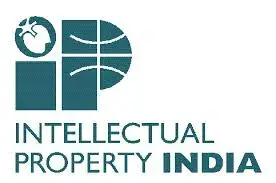
The Indian Patent space last week witnessed another important change. The Indian Patent Office on December 4, 2018 published Draft Patents (Amendment) Rules, 2018 (hereinafter refereed to as ‘Draft Rules’) for public comments.
Read Full Story Click here to learn more.
Bio-piracy initiative by India
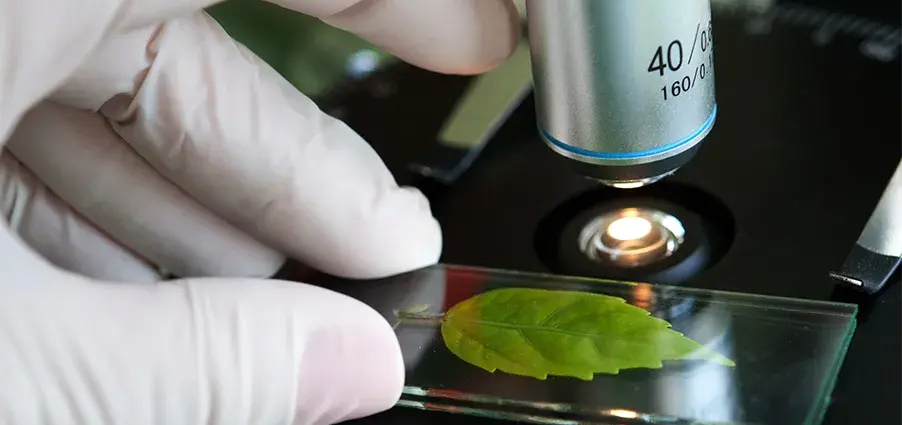
India has always been at the forefront when it comes to a debate about misappropriation of its traditional knowledge by corporate entities and foreign research organizations. The traditional knowledge is considered as information about natural products carried over by communities through generations without proper account or documentation of the same. Recently, the debate has been curated (articulated) as involving issue of bio-piracy, where an entity makes use of traditional knowledge illegally and reaps benefits out of such exploitation without prior consent of communities and sharing any benefits with communities.
Read Full Story Click here to learn more.
Patentability of Block Chain Technology

Blockchain technology is basically a type of technique or platform used to implement public ledger system. The blockchain is an indestructible digital ledger with respect to economic transactions that can be programmed to record not just financial transactions but virtually everything of value. Data can be sent across a network securely by implementing blockchain’s ledger methodology and cryptographic techniques. The technique will ensure that the data is from the correct sources and that there are nointerim obstructions interim. If this technology is used more widely then the probability of hacking can be decreased.
Read Full Story Click here to learn more.
PCT rules amendment on fee reduction

According to an amendment to the regulations under the Patent Cooperation Treaty (PCT) adopted by the Assembly of the International Patent Cooperation Union (PCT Union) on September 30, 2014, at its Forty-Sixth (27th Extraordinary) Session, with effect from July 1, 2015, a revised schedule of fee structure is provided. As per amendment to the PCT Schedule of Fees, the 90% fee reductions in item 5 of the Schedule of Fees is applicable, if the international application is filed by:
- an applicant who is a natural person and who is a national of and resides in a State that is listed as being a State whose per capita gross domestic product is below US$ 25,000 (according to the most recent 10-year average per capita gross domestic product figures at constant 2005 US$ values published by the United Nations), and whose nationals and residents who are natural persons have filed less than 10 international applications per year (per million population) or less than 50 international applications per year (in absolute numbers) according to the most recent five-year average yearly filing figures published by the International Bureau; or
- an applicant, whether a natural person or not, who is a national of and resides in a State that is listed as being classified by the United Nations as a least developed country;
Read Full Story Click here to learn more.
India: Delhi High Court awards damages worth 10 Lakhs for Patent Infringement
The Hon’ble Delhi High Court in a recent judgement in the case of, Vior (International) Ltd. & Anr. v. Maxycon Health Care Private Ltd., held that the acts of the Defendants for unauthorized manufacturing and selling of patented product amounts to infringement of Plaintiffs rights granted under Section 48 of the Patents Act, 1970. Further, the act of the Defendants of blatantly copying the content of Plaintiffs website is in violation of the copyright vested with the Plaintiffs and amount to infringement as per Section 51 read with Section 14 of the Copyright Act, 1957.
The Case
Facts
Vior (International) Ltd. (hereinafter referred to as ‘the Plaintiff No. 1’), a Switzerland based company, are exclusive owners of registered Indian Patent no. 221536, a product by process patent on Ferric Carboxymaltose, a novel water-soluble iron carbohydrate complex prepared by a novel process. The patented product is useful in the intravenous treatment of iron deficiency when oral iron preparations are ineffective or cannot be used. The Plaintiff 1 has granted a licensee to Plaintiff 2, a company incorporated under the Companies Act, 1956, for the manufacture and commercialization of above patented product, in India. Further, Plaintiff 2 is the owner of the copyright with respect to literary work on website the www.emcure.co.in.
The Plaintiffs filed a suit for restraining the Defendants from infringement of Indian Patent No.221536; infringement of copyright in the literary work; dilution & tarnishment of brand image of the Plaintiffs; malicious falsehood; delivery up; rendition of accounts; damages etc. against the Defendants.
Further, the Plaintiffs pleaded that the Defendants are manufacturing and selling the impugned patented product and falsely represented on their website that the Plaintiff no.1 has given an IP license to the Defendant no. 1 to manufacture and commercialize the impugned patented product.
Still, further, the Plaintiffs pleaded that Defendant no. 1 has blatantly copied the literary write-up/content of the Plaintiff No.2s website www.emcure.co.in, thereby amounting to infringement of the copyright of Plaintiff No.2. Such activities of the Defendant no.1 also amounts to dilution of the brand image of the Plaintiffs thereby resulting in unlawful enrichment.
Furthermore, the Plaintiffs pleaded that the Defendant No.1, despite the operation of an ad-interim injunction against it, continued its infringing activities through the Defendant No.3 and under the able guidance of the Defendant No.2.
As none appeared on behalf of the Defendants despite service of notices hence the proceedings are treated ex-parte.
Issue:
- Whether the acts of the Defendants for unauthorized manufacture and sale of patented product amounts to infringement of Plaintiffs’ patent rights?
- Whether the act of the Defendant no. 1 for misrepresenting on the website as being an IP license holder of impugned patent amounts to infringement of Plaintiffs’ patent rights?
- Whether the act of the Defendant no. 1 for blatantly copying the content of the Plaintiff no. 2 website, amounts to infringement of Plaintiff no. 2’s copyright?
Plaintiff’s Contentions
The Plaintiffs relying upon the evidence of sole witness, Shri Pankaj Pahuja (PW1) and the documents Ex. PW1/1 to Ex.PW1/23, Ex PW1/B, Ex.PW1/A1 to Ex.PW1/A5 as well as Mark E to Mark H, argued that the act of the Defendants are nothing short of oppressive, arbitrary and unconstitutional.
The Plaintiffs’ relying upon the decision by the Division Bench of Delhi High Court in paragraph number 69 and 70 of Hindustan Unilever Limited v. Reckitt Benckiser India Limited, 2014 (57) PTC 495 [Del] [DB] claimed for damages to the tune of INR 1,00,01,000 (USD 142861 approx.). The Plaintiffs have claimed the rendition of accounts of profit illegally earned by Defendants or in the alternate damages to the extent of INR 1,00,01,000 (USD 142861 approx.).
Further, for claiming the punitive damages, the Plaintiffs relied upon the case of Jockey International Inc & Anr. vs. R. Chandra Mohan & Ors. CS(OS) 253/2012, wherein it was held that one who chooses to stay away from the proceedings of the Court, should not be permitted to enjoy the benefits of evasion of Court proceedings. The damages in such case must be awarded.
Analysis by the Court on unauthorized manufacture and sale of patented product under misrepresentation as IP license holder
The Court while determining whether a patent has been infringed, took into consideration Section 48 of the Patents Act, 1970, and held that the act of the Defendants to deal with the impugned API clearly relates to the product Ferric Carboxymaltose as has been claimed by the Plaintiff No.1 in its independent claim 1. Further, such a product cannot be clinically effaceable without using the process as claimed. The Court agreed with the Plaintiffs that the acts of the Defendants amount to infringement of the Plaintiffs’ rights.
Analysis by the Court on blatant copying of literary work
The Court while examining the issue of copying of literary work, took into consideration Section 51 read with Section 14 of the Copyright Act, 1957, and held that the act of the Defendant No. 1 of blatantly copying the content of the Plaintiff No.2’s website is in violation of the copyright vested with the Plaintiff No.2 and amounts to infringement of copyright by the Defendant No.1. The Court relied on the case of R.G Anand vs M/S. Delux Films & Ors. and held that the literary work of Defendant No.1 in its website is substantially similar to the content of the Plaintiff No.2, thus, such an adoption is mala fide and is with a clear intention on the part of the Defendant to save himself of the labour. Moreover, the acts of the Defendant No.1 in publication of a statement indicating a false association with the Plaintiff No.1 amounts to a tort of malicious falsehood.
The Court also relied on the decision of Rookes v. Barnard (1964) and awarded damages that is not merely to compensate the Plaintiffs for the loss that has been sustained by reasons of the Defendants’ wrongful act, but also to punish the Defendants in an exemplary manner and vindicate the distinction between a willful and innocent wrongdoer.
Decision of the Court
The Court held that the act of the Defendants amounts to infringement of patent and copyright of the Plaintiffs. In view thereof, damages for a sum of INR 10,00,000 (USD 14284 approx.) in favour of the Plaintiffs and against the Defendants, is passed on account of infringing the registered marks, trade dress and violating interim order.
India: Delhi High Court clarifies on what is new and original under the Designs Act
Design is that aesthetic feature which adds the exclusive quality to the product. Any product can become visually appealing through its design. This is exactly what the Designs Act, 2000 (hereinafter referred to as ‘the Act’) protects i.e. the aesthetic appearance. Designs, as defined by the Act, is the ‘features of shape, configuration, pattern, ornament or composition of lines or colors applied to any article in two or three-dimensional form, or both, by any industrial process or means – whether manual, mechanical or chemical, separate or combined – which in the finished article appeal to and are judged solely by the eye’. The Act also lays down the necessary parameters that are requisite conditions for a design to be registered under the Act. The very first and foremost condition is that the design should be new or original, not previously published or used in any country before the date of application for registration. Focusing on this criterion, recently, the Delhi High Court its judgement, in the case of Crocs Inc. Usa V Liberty Shoes Ltd. & Ors., on February 8, 2018, cancelled the registered design of Crocs Inc. USA and dismissed the claim of piracy of design made by the Company. The Court held that, ‘it is necessary for protection of a registered design that the registered design must be an Intellectual Property Right created after application of sufficient time, labor, effort, etc. and that there must be sufficient newness or originality i.e. existence of requisite innovation and that trade variations of known designs cannot result in newness and originality.’
Brief Background
Crocs Inc. USA (hereinafter referred to as ‘the Plaintiff’) are proprietors of certain registered designs related to footwear in India. The registered design in issue in the case bear registration numbers 197685 and 198786.
- In the plaint, the Plaintiff stated that Liberty Shoes Ltd. and others (hereinafter referred to as ‘the Defendants’) has been violating the rights of the Plaintiff by imitating its registered design shown above. It claimed piracy of design under Section 22 of the Act.
- The Plaintiff filed a suit for permanent injunction against all the Defendants from manufacturing, marketing, supplying, using, selling, soliciting, exporting, displaying, advertising by any other mode or manner the impugned design or any other design which is deceptively similar to or is a fraudulent and/or any obvious imitation of the Plaintiff ‘s design.
- The Plaintiff also filed interim applications seeking pendente lite restraint against the Defendants from manufacturing, marketing, supplying, selling etc. the footwear of the Defendants which footwear as per the Plaintiff have been manufactured and sold by infringing the registered designs of the Plaintiff.
- The Defendants challenged the interim injunction application.
Issues
- Whether the registered designs, of the Plaintiff, lacked novelty and originality?
- Whether the registered designs existed in public domain prior to the registration being granted in favor of the Plaintiff?
- Whether the Defendants are guilty of piracy of designs?
Plaintiff’s Contentions
- The Plaintiff alleged that the footwear manufactured by the Defendants were more or less same or similar, with color variations or other changes with respect to placements of the perforations/open spaces/holes in the footwear or certain other aspects for creating visual appeal.
- With regard to the website evidence filed by the Defendant in pursuance of issue no. 2, it argued that depiction in the website is no guarantee that depiction of the footwear in question in fact took place as on December 10, 2002, as stated in the printouts downloaded and filed by the Defendants.
- The Plaintiff contended that once the registration is done, there must be a presumption of newness and originality and the onus should be on the Defendant to prove that there is no newness or originality.
Defendant’s Contentions
- They contended that the registration of design with respect to footwear is in itself invalid. Taking defence under Section 22 (4) of the Act, they argued that since the registration of the design granted to the Plaintiff is not valid, hence no case could be made out of piracy of the registered design of the Plaintiff.
- They further claimed that the registered design of the Plaintiff’s when registered lacked any newness/originality. The design was in public domain at the time of registration.
- To prove issue no. 2, the Defendants produced the internet-downloaded pages from the website of the company ‘Holey Soles’, the footwear designs of which were similar to that of the Plaintiff. The designs on the page were stated to be archived on the page since December 12, 2002. The ‘Holey’ in the ‘Holey Soles’ is because of holes/spaces/gaps existing in the footwear of this company.
- It was submitted that the registration date granted to Plaintiff in India was May 28, 2004. Since, the design of the footwear of the Plaintiff was found in the public domain since 2002, therefore, the registration granted to the Plaintiff was clearly faulty and liable to be cancelled under Section 19 of the Act.
Court’s Decision
- The Court analyzed Sections 2 (d), 4, 19 and 22 of the Act.
- Regarding issue no. 1, the Court went on to evaluate the meaning of a design being new or original. The Court revisited its judgement in Pentel Kabushiki Kaisha & Anr. Vs. M/S Arora Stationers & Ors., and held that mere variations to existing products which do not result in requisite amount of newness or originality cannot be considered as innovations having newness and originality for being granted monopoly for fifteen years.
- Further adducing the test of newness and originality, the Court held that it is necessary for protection of a registered design that the registered design must be an Intellectual Property Right created after application of sufficient time, labor, effort, etc. and that there must be sufficient newness or originality i.e. existence of requisite innovation and that trade variations of known designs cannot result in newness and originality.
- Dealing with issue no. 2, the Court reiterated that according to Section 19 of the Act a design, which existed in the public domain prior to grant of registration under the Act, is a ground for cancellation of the design. Rejecting the contentions of the Plaintiff, the Court prima facie accepted that such design existed in public domain prior to Plaintiff’s registration, the Plaintiff therefore, cannot claim exclusivity for its registered design merely on the ground that Plaintiff ‘s footwear/registrations does have a strap at the back of its footwear.
- The Court opined that in cases where the registered design is associated with something so common to human lifestyle, for example in this case footwear, the bar of newness and originality automatically increases. It said that it requires an effort larger than an ordinary effort to create a different footwear than the known types of footwear, to be an innovation/creation having such requisite newness and originality for that creation to become an Intellectual Property Right as a design in terms of the Designs Act.
- In the present case, in Court’s view the design of Plaintiff’s footwear is nothing but a sandal. Sandal with open spaces are only trade variations of a sandal. Trade variations of footwear/sandals cannot be and should not be given exclusive monopoly. In addition, the features which were argued on behalf of the Plaintiff, as existing in its sandals/footwear of mounds or humps or straps (or lack of them) or soles designs or perforations/open spaces etc., even when taken as a whole, or even individually for that matter, cannot be said to result in innovation or creation of newness or originality.
- The Court also assessed the claim of cost payable to the Defendants. Taking into consideration the Commercial Courts Act, 2015, read with Section 35 of the Code of Civil Procedure, the Court held that ‘the Court had the power to order costs at the interim stage, and that, in this case, the Plaintiff, in refusing to settle the interim applications with the Defendants, and ‘obdurately and illegally continuing proceedings’, and imposed costs of a whopping INR 2 lakhs per Defendant, in addition to legal costs’.
India: Alteration to the definition of a Startup – a relief for the Biotech Sector
The Department of Industrial Policy and Promotion (DIPP), under aegis of the Union Ministry for Commerce and Industry, has recently brought up a revised definition of start-ups.
The new definition according to DIPP notification shall now recite as :
“An entity shall be considered as a start-up up to a period of seven years from the date of incorporation/registration, if it is incorporated as a private limited company (as defined in the Companies Act, 2013) or registered as a partnership firm (registered under Section 59 of the Partnership Act, 1932) or a limited liability partnership (under the Limited Liability Partnership Act, 2008) in India”.
Read Full Story Click here to learn more.
2018 – A year in Copyright
India: Copyright Office issued Practice and Procedure manual, 2018
In an endeavor to improve transparency and speedy disposal of applications, the Copyright Office has published on its website the Practice and Procedure Manual for examinations of applications in respect of literary, artistic, musical, cinematograph film and sound recording works vide public notice dated April 27, 2018.
Read Full Story Click here to learn more.
India: Cabinet approves accession to WIPO Copyright Treaty, 1996 and WIPO Performance and Phonograms Treaty, 1996

On July 4, 2018, the Union Cabinet chaired by Prime Minister Narendra Modi approved the proposal submitted by Department of Industrial Policy and Promotion, Ministry of Commerce and Industry to accede to the WIPO Copyright Treaty, 1996 (hereinafter referred to as “WCT”) and the WIPO Performance and Phonograms Treaty, 1996 (hereinafter referred to as “WPPT”) which extends coverage of copyright to the internet and digital environment.
Read Full Story Click here to learn more.
India: Protection of Commercial Cinematographic rights under Copyright Act 1957
Recently, the Madras High Court in the case of Kajal Aggarwal vs The Managing Director gave a decision based on the infringement of Cinematographic rights of an artist under a contract which is not enforced under Copyright Act, 1957 in India. The Court held that V.V.D.& Sons Pvt. Ltd were the first owner of an advertisement featuring actor Kajal Agarwal and rejected the actor’s plea that the company should be restricted to use the commercial only for one year.
Brief Facts
- Kajal Aggarwal (hereinafter referred to as ‘the Plaintiff’) is a renowned actress in India.
- V.V.D. & Sons Pvt. Ltd (hereinafter referred to as ‘the Defendant’) approached the Plaintiffs to support their products to be marketed.
- The terms of promotional participation were finalized after mutual negotiations between the parties. The Plaintiff agreed to subject herself to be available to shoot the required materials to use the same for the advertisements of the Defendant.
- The parties entered into the agreement on December 29, 2008.
- The Plaintiff alleged that the Defendant was to use the advert for only a year but had done so beyond that period from 2008. Aggrieved by the act, the Plaintiff filed a suit before the Madras High Court (hereinafter referred to as ‘the Court’)
Issues
- Whether the Defendant was restricted to use the profile of the Plaintiff only till the period authorized in the agreement?
- Whether the Defendant exceeded the commitment and violated the condition in advertising their products with the appearance of the Plaintiff’s profile to cause prejudice?
- Whether or not the Defendant is the owner/author of the copyright in the commercial (cinematographic) film as per Section 17 of the Copyright Act, 1957?
- Is the term of the copyright in the commercial (cinematography) film, 60 years as stipulated under Section 26 of the Copyright Act?
Plaintiff’s Contentions
- It was submitted that the Plaintiff completed the shooting and photo sessions for two full days.
- However, it was alleged that the Defendant did not keep up their commitment and violated the terms on which the Plaintiff agreed to extend her profile for the promotion of their business.
- It was also alleged that all the terms, which were agreed upon, were not incorporated with the full text in the agreement prepared and brought with the signature of the Defendant to subscribe the signature of the Plaintiff.
- It was submitted that the Plaintiff made specific protest to incorporate all the agreed terms.
- It was further alleged that the Defendant had included by hand written words in clause 2 of the terms of agreement to restrict the advertisements to the geographical limits of Tamil Nadu and Andhra Pradesh only.
- It was promised by the Defendant to prepare and send the proper text with agreed conditions, but, they failed to do so.
- It was contended that the Defendant started using the advertisement materials with Plaintiff’s profiles for their product’s marketing even before furnishing the corrected agreement and the subscription of the signatures on either side and on coming to know the same, the Plaintiff had protested, and the Defendant promised to rectify the issue.
- It is contended that despite knowing, the Defendant continued to exploit the popularity of the Plaintiff through their advertisement materials without giving regards to the terms of agreement agreed to between the parties.
Defendant’s Contentions
- It denied breaching the agreement between him and the Plaintiff regarding the promotion of the products.
- It was alleged that when the ad film for coconut oil was made, the Plaintiff was only an ordinary model and she became an actor in films later.
- It was submitted that the Plaintiff was paid remuneration a of INR 3,00,000 (USD 4292) for the ad film. It is denied that any geographical limit was agreed upon for advertising the product using the Plaintiff’s name, image, etc.
- It also denied promising to prepare and send a revised text of the agreement.
- It submitted that it had been using the advertisement material in accordance with the agreement and not in violation to the terms of the agreement.
- It also submitted that it holds copyright over the ad film and all rights in the said film vested with the Defendant. The Plaintiff has no right over the same, since she was paid the sum demanded by her for acting in the said ad film.
Court’s Decisions
- The Court noted that with respect to an Ad film for promoting the products of the Defendant, the Plaintiff and the Defendant entered into an agreement on December 29, 2008. Also, it is not disputed also that the Plaintiff has been paid a sum of INR 3,00,000 (USD 4292) for completing the shooting of the Ad film.
- Regarding the Defendant being the first owner of the copyright, the Court held that ‘the Defendant being the employer and having utilized the services of the Plaintiff for promoting their products through the ad film, the Defendant shall be the first owner of the copyright thereof in the absence of any agreement to the contrary.’
- On the question of the period for which the advert could be used, the Court held that ‘A person who becomes the first owner of the copyright for his entire work, has been conferred with a statutory right for a period of 60 years over the cinematograph of the film. This statutory right cannot be taken away by a performer in the cinematograph film by virtue of an agreement. Hence, we hold that the Defendants entitled to exploit the work for the entire term prescribed under Section 26 of the Copyright Act and is not restricted for a period of one year by the agreement.’
India: Delhi High Court on the Copyright on Photographs uploaded on Facebook
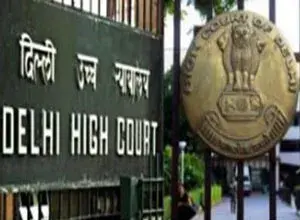
In a recent order, in the case of Fairmount Hotels Pvt. Ltd. vs. Bhupender Singh , the Hon’ble Delhi High Court has recognized copyright on photos uploaded on Facebook. The Hon’ble Court while adjudicating the dispute over copyright on the photographs of the Plaintiff’s hotel, decided in favor of the Plaintiff as the Defendant did not raise any objection against the contended rights of the Plaintiff over the photographs.
Read full Story Click here to learn more.
India: Delhi High Court on Original work under Section 13 of the Copyright Act
Issues
- Whether the Respondent’s copyright is an “original” artistic work?
- Whether the Appellant is entitled to having the Respondent’s copyright removed on the grounds of it being similar to the label?
Copyright Board’s Observations
- It was observed that the allegation of copying is in a very general form and no specifics of the attributes of copying have been explained.
- It was further observed that the words “NIHAR” & “NIHAL” owe their roots to different languages having distinct meanings. “NIHAR‟ is a word of Sanskrit origin, whereas “NIHAL‟ owes it’s origin to Persian.
- It was stated that arguments in the nature of class of goods and nature of business of the Petitioner and Respondent being similar and so there being degree of confusion and deception have a prominent role in determining a matter relating to the rights of a trade mark. In matter of copyright, lackness of the originality of the work is the touchstone.
Appellant’s Contentions
- The Appellant claimed that the comparative features of the two labels are so similar that “NIHAL UTTAM” label can safely be termed as colorful imitation or substantive reproduction.
- It was claimed that the color scheme between the two labels is the same
- It was further claimed that the manner in which the coconut tree is arranged is the same, the arrangement of two broken coconuts is similar.
- It was contended that due to the long user in the market, the Appellant’s label was quite extensively used and hence the Respondent had access to the Appellant’s label. Evidence was presented by the Appellant in the form of various documents to support the contention.
Evidence
Respondent
The proviso to Section 45 states that before an application of copyright registration in artistic work is allowed, a no objection certificate has to be obtained from the Registrar of Trademark. The same has been submitted by the Respondent.
Appellant
The following evidence has been submitted in the form of documents-
- Copies of packaging of TATA NIHAR since 1995
- Economic Times dated 27th April, 2002 about the market share of TATA NIHAR.
- Deed of assignment dated 10th September, 1997 between Ajit Upasham, and the predecessor of the Appellant assigning the copyright to the Appellant’s predecessor.
- Second deed of assignment dated 25th August, 2001 for several variations of NIHAR label.
Court’s Decision
- The Court observed that a perusal of the labels clearly shows that the Respondent’s artistic work “NIHAL UTTAM” is not an original artistic work but an imitation of the Appellant’s label. The Respondent’s label is a substantial reproduction and a colorable imitation of the Appellant’s “NIHAR COCONUT OIL”. The Appellant is thus a person aggrieved and is entitled to maintain the petition under Section 50 of the Copyright Act 1957.
- The Court in the order stated that the color scheme between the two is same, further the manner in which the coconut tree and the broken coconuts are placed is the same.
- The documents submitted by the Appellant sufficiently show that the label was available earlier in the market. The Appellant’s products were openly advertised and have substantial sale in the market. Clearly the Respondent is in a position to know about its existence and copy the same.
- It further held, that the Copyright Board was concerned with the artistic features in the label and not the trademark, hence, the rejection of the rectification application on the ground that the words are from different origin is contrary to law.
- Thus, the appeal is allowed.
Opinion
The Court, in this case, has reiterated the qualification for a work to be artistic i.e. original thought. This is one of the aspects of copyright in the absence of which the same may not be registered. The case thus provides that lack of originality is the touchstone of rectification petition. The Court held that “any entry made of a work which is not an original work would be an entry wrongly made in the Register”. This implies that similarity with an already existing trademark, provides an important basis for rectification of copyright register thereby cancelling the registration of the said artistic work.
2018- A year in GI
India: Madurkathi of West Bengal Gets a Geographical Indication (GI) Tag
Madurkathi are mats woven from a locally available soft reed called “Madur kottir”. Madur is the Bengali vernacular for floor mats. Mats are an integral part of Bengal’s lifestyle. Madur is a tradition and pride of Medinipur district of West Bengal. Usually, women of the households are involved in weaving this beautiful craft. With change in the requirement of the market, the mats are now also used for making decorative and utilitarian items. Madurkathi is locally available and is found abundantly in the alluvial tracts of East and West Medinipur districts of West Bengal.
On March 28, 2018, the Government of West Bengal, was granted Geographical Indication (GI) Tag for ‘Madurkathi’ vide registration no. 567 in respect of handicrafts. The application of registration of Madurkathi was filed by The West Bengal Khadi & Village Industry Board, Government of West Bengal. Madurkathi mats are popular and beneficial for the sitting as well as bedding purposes. The non-conducting property and ability to absorb sweat makes the mat a necessity household item in the hot and humid climate of West Bengal. These mats are also used for religious purposes.
The Government of West Bengal has previously secured registrations for handicrafts products. Details thereof are as under:
| Registration No. | Geographical Indications |
| 52 | Nakshi Kantha |
| 104 | Santiniketan Leather Goods |
| 138 | Santipore Saree |
| 173 | Baluchari Saree |
| 176 | Dhaniakhali Saree |
| 453 | Bankura Panchmura Terracotta Craft |
| 563 | Bengal Dokra |
| 564 | Bengal Patachitra |
| 565 | Purulia Chau Mask |
| 566 | Wooden Mask of Kushmandi |
India: Gobindobhog Rice gets a Geographical Indication (GI) tag
Other than Rosogolla, the Government of West Bengal, earlier last year in September earned itself another Geographical Indication (GI) Tag in Gobindobhog Rice. The rice is a native, aromatic, non-basmati premium variety rice from West Bengal. The cultivation of it is as old as 300 years in the area. It is short white grains, sticky rice having a sweet buttery flavor and pleasant aroma. It derives its name from principal ingredient used in preparation of offerings to Govindajiu, the family deity of Setts of Kolkata.
Read Full Story Click here to learn more
India: Banaganapalle Mangoes Gets a Geographical Indication (GI) Tag
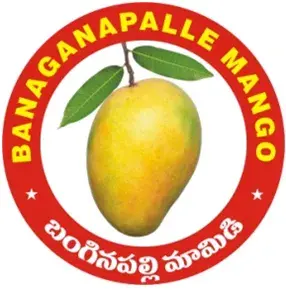
Andhra Pradesh tasted the sweetness of its Banaganapalle mangoes as it finally got the Geographical Indication (GI) tag this year in the May after a long wait of 100 years.
The tag was given by the Geographical Indications Registry, Chennai after an application from the Horticulture Commissioner, Andhra Pradesh was filed. The ‘King of fruits’ i.e. Banaganapalle mangoes is now officially owned by the State Government of Andhra Pradesh. The logo decided by the Government features a bright yellow fruit around which the tagline says “Banganappalle Mangoes of Andhra Pradesh,” with images of a man and a woman appearing to be farmers. Anyone from now on to sell or produce these must first apply to become authorized users and would require a no-objection certificate (NOC) from Andhra Pradesh Government’s horticulture Department.
Read Full Story Click here to learn more.
2018 – Coffee with HR
S.S. Rana & Co., celebrates Indian Constitution Day with much Enthusiasm
“Constitution Day, also known as Samvidhan Divas, is celebrated in India on 26 November every year to commemorate the adoption of Constitution of India. On this day in 1949, the Constituents Assembly of India adopted the Constitution of India, and it came into effect on 26 January 1950”.
In light of the celebrations around the country, S. S. Rana & Co., as a part its employee engagement programme, conducted a Quiz Competition for the members of the firm!!
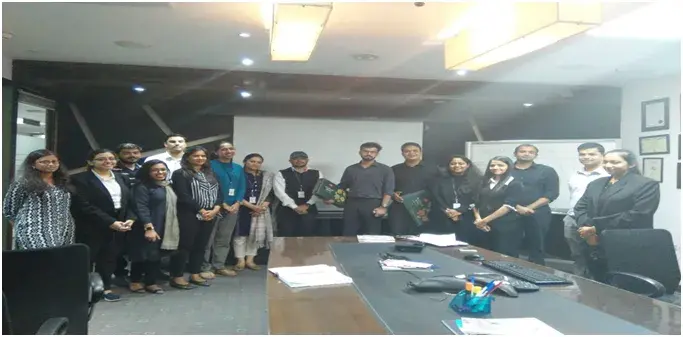
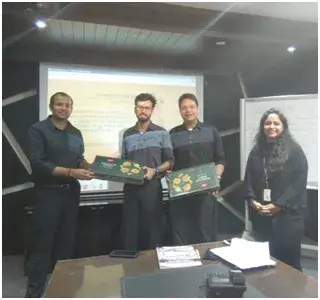
Vikrant Rana, Managing Partner of S.S. Rana & Co., becomes a part of honoring young talent on the occasion of Children Day
Every Child has a right to be respected, the right to dream, the right to be loved and cared for the gifts that should be recognized and valued, the right to achieve their God-given potential and the need for unconditional love.
On the occasion of Children’s Day, S.S. Rana & Co. feels honored to wind the ‘wings of young dreams’ along with Jambay Gyaltsen Chetan. Vikrant Rana, Managing Partner of S.S. Rana & Co., attended an event before the Prize Distribution of E.F.S Annual Badminton Tournament, 2018 in Delhi.
Read Full Story Click here to learn more.
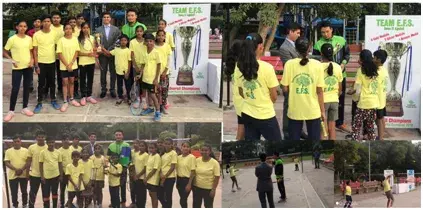
S.S. Rana & Co. hosted a Yoga Session at Andaz Aerocity Delhi
S.S. Rana & Co. truly believes that ‘a healthy mind lives in a healthy body and creating a balance between mind, body and soul is a must’. Continuing its Yoga tradition, the firm before the start of APAA Council Meeting in Delhi hosted a Yoga Session on November 16, 2018 at Andaz Delhi Aerocity.
We would like to thank all the attendees for making our session a part of their yogic journey of health, serenity and fitness. The intention of the session was to give everyone a break from their hectic schedules and have a conversation with their bodies. The beautiful venue of Andaz, right under the positive energy of the tropical sun surrounded by lush landscaped gardens coupled with the peaceful energies of our attendees inspired relaxation and the unraveling of worries, and offered a complete schedule that strengthened the body, mind and spirit.
On behalf of the entire team at S.S. Rana & Co., we would like to take this opportunity to sincerely thank all the attendees for their support and participation. We hope that everyone had a serene Yogic experience.
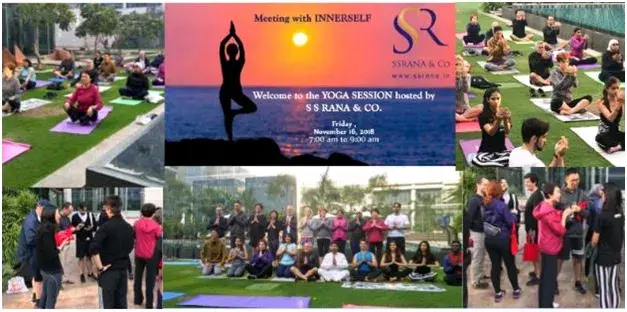
Mrs. Bindra Rana, Founding Partner, celebrates her Golden Anniversary of being enrolled at the Bar Council!
We are happy to share a proud moment of SSRANA & Co. as Mrs. Bindra Rana, Founding Partner, celebrates her Golden Anniversary of being enrolled at the Bar Council!
Congratulations on the 50 Glorious years of practicing as a Lawyer, which is an achievement in itself, magnified more because it is done by a woman.
You enrolled as a lawyer when the legal profession was not an obvious choice for women. You truly set aside the bias and stereotypes and also are an inspiration to many! We are blessed to have a guiding light like you.
Wishing you many more such glorious years!
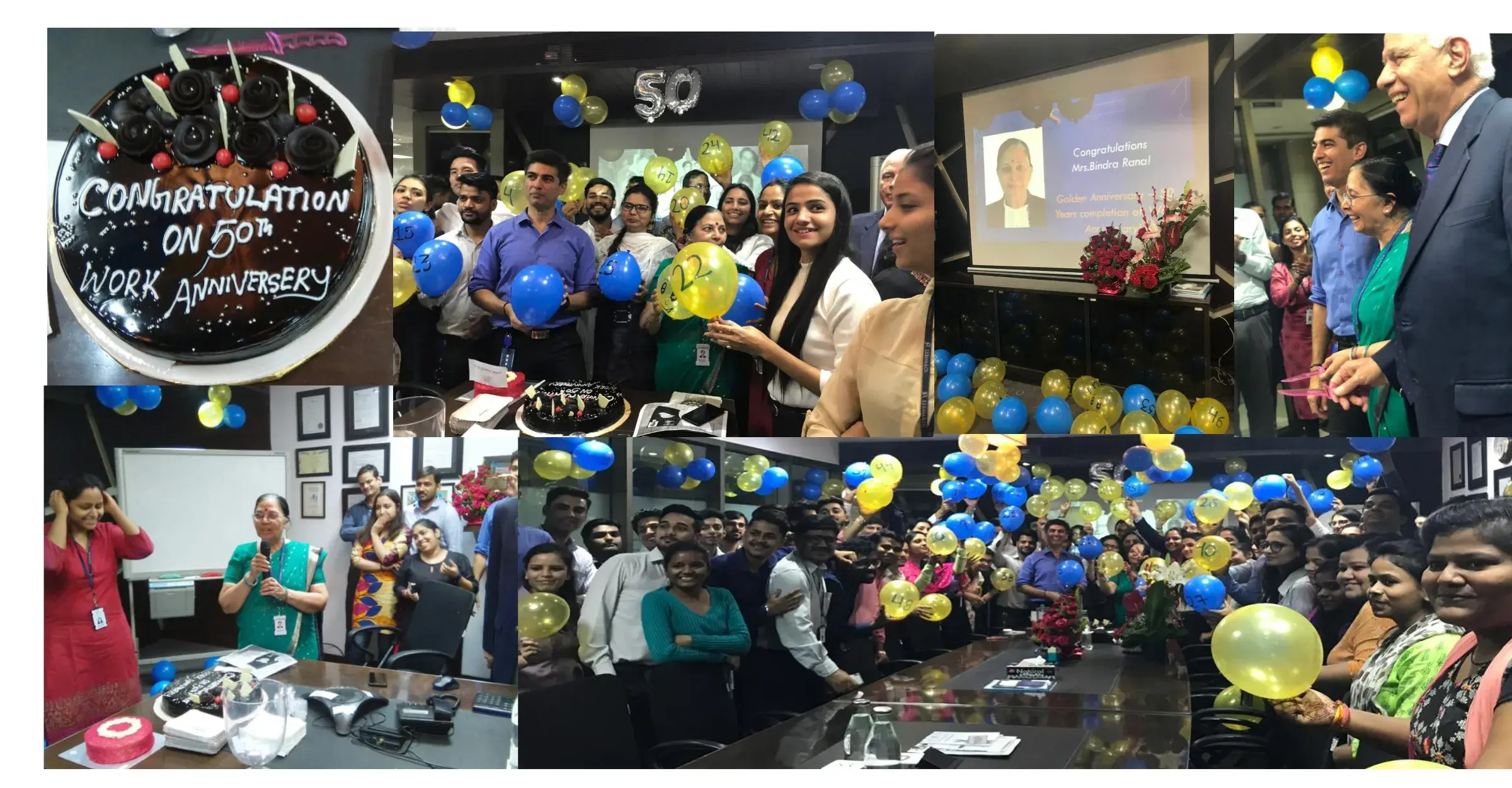
Celebrating 29th Anniversary at Agra!
The big value of running a business is really two things: the knowledge and the commitment – Ben Horowitz
It was 29 years ago, that on September 1, 1989, the first step towards the journey of S.S. Rana & Co. was taken. The journey was full of ups and downs, success and failures, strengths and positivity. And today we stand together, proudly announcing that we, here at S. S. Rana & Co. have completed 29 years and are counting for many more to come.
Since the Firm’s inception, every year this day is celebrated with joy. This year was no exception and it was even more special as we were just a step away from completing three decades. It’s not every day that we turn 29 and it was such a symbolic time!!
Read Full Story Click here to learn more.
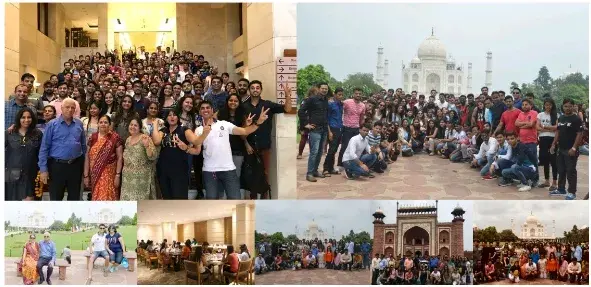
SSRana & Co. celebrates National Sports Day!!
National Sports Day is observed every year across India on August 29 to mark the birth anniversary of the legendary hockey player Dhyan Chand who was born on August 29, 1905 and won gold medals in Olympics for India in the years 1928, 1932, and 1936.

With the country also competing at the 2018 Asian Games currently being held at Jakarta and Palembang, in Indonesia, and as an effort to encourage more employee participation in Sports, we at SSRana & Co, organized a Quiz Competition between the Departments.
The Quiz began with the introduction of the quizmaster and contestants from each department. The rules of the inter-department quiz competition were announced. The Quizmaster conducted the quiz in a very interactive way and the teams participated with great enthusiasm. They skillfully answered the questions asked. Though some of the questions were very tricky, the teams tried to answer them with confidence. The questions put forth to the teams were intriguing, exciting and made the audience go ‘Aah!’. The audience also got a chance to participate whenever a question got unanswered.
Every round was a mixed bag with questions from a plethora of sports like cricket, football, ice hockey, lacrosse, badminton, squash, etc. The final round gave the teams a chance to catch up with the leaders and put-up a tough fight.
A range of emotions were felt in the competition – happiness, sadness, regret and excitement. The Trademark Department of the Firm won the Quiz Competition scoring the highest points followed closely by the Patent Department.
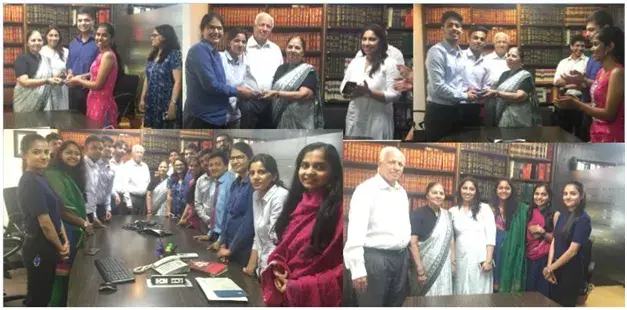
Mrs. Lucy Rana shines again this time at Women Entrepreneurship Summit, 2018’
S.S. Rana & Co. proudly announces that Mrs. Lucy Rana, Managing Associate Advocate with the firm has shined again. She was felicitated with Naari Udyamita Puraskar, 2018 presented by Smt. Krishna Raj, Union Minister of State of Agriculture & Farmers Welfare at the Women Entrepreneurship Summit, 2018 organized by Women Entrepreneur Association (WEA), India on August 25, 2018 at The Ashoka, New Delhi.
Read Full Story Click here to learn more.
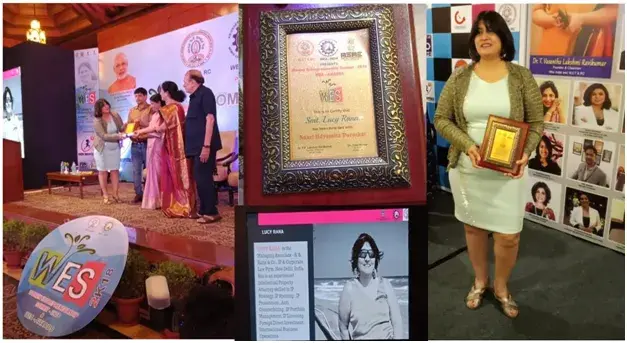
“SSRana & Co. organizes an awareness workshop on Respiratory illness & Tuberculosis”
Good health is the feeling of mental, physical and social well being of a person. It is of paramount importance which everyone should maintain to free of bodily disorders and feel good all time. However it depends on a host of several things. A person having a good health will have a good life. To become wealthy in life you need to earn a good health and not just money.
Read Full Story Click here to learn more.
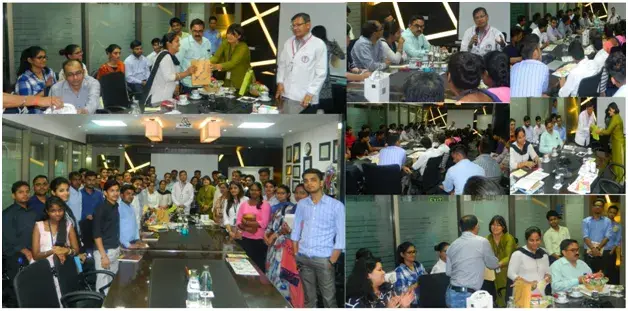
Just another day at Office!! – SSRana takes the lead in initiating corporate wellness for colleagues
June 21, 2018 marks the fourth International Yoga Day, three years after Indian Prime Minister Shri Narendra Modi successfully convinced the UN to declare an International Day for Yoga. The declaration was made on December 10, 2014, and India celebrated the inaugural Yoga day with full fervor on June 21, 2015, as covered in Vol. VII, Issue No. 25 of our e-newsletter “IP ©onnect”, dated June 22, 2015,
Yoga is an invaluable gift of India’s ancient tradition. It embodies unity of mind and body; thought and action; restraint and fulfillment; harmony between man and nature; a holistic approach to health and well-being. It is not about exercise but to discover the sense of oneness with yourself, the world and the nature.
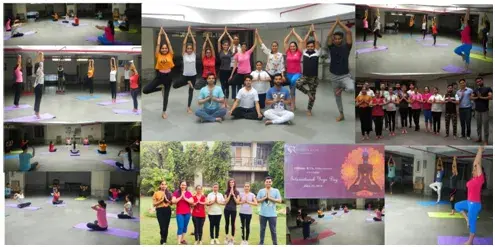
SSRana & Co. celebrates International Women’s Day
International Women’s Day, as the name implies, is dedicated to celebrating womanhood, their social, political, cultural, economic achievements and their significant contributions to society. The day also emphasizes the importance of gender equality. On this day, people from all across the world come together to partake in the celebration of womanhood.
Read Full Story Click here to learn more.
